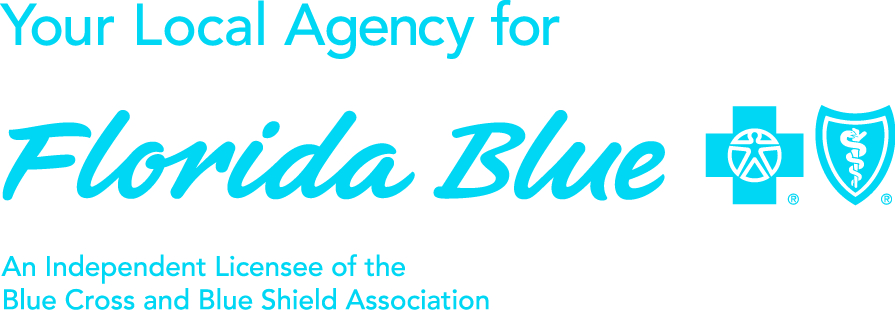Critical Illness Insurance: What Is It? Who Needs It?

If you’re lucky, you’ve probably never had to use critical illness insurance (sometimes called catastrophic illness insurance). Perhaps you’ve never even heard of it. But in the event of a big health emergency, such as cancer, a heart attack, or a stroke, critical illness insurance could be the only thing standing between you and financial ruin. Many people assume they’re fully protected with a standard health insurance plan, but the exorbitant costs of treating life-threatening illnesses are usually more than any plan will cover. Read on to learn more about critical illness insurance and whether it's something you and your family should consider.
KEY TAKEAWAYS
- Critical illness insurance provides additional coverage for medical emergencies like heart attacks, strokes, or cancer.
- Because these emergencies or illnesses often incur greater-than-average medical costs, these policies pay out cash to help cover those overruns when traditional health insurance may fall short.
- These policies come at a relatively low cost. However, the instances that they will cover are generally limited to a few illnesses or emergencies.
Critical Illness Insurance 101
As the average life expectancy in the United States continues to increase, insurance brokers are finding ways to make sure Americans can afford the privilege of getting older. Critical illness insurance was developed in 1996, as people realized that surviving a heart attack or stroke could leave a patient with insurmountable medical bills.
“Even with excellent medical insurance, just one critical illness can be a tremendous financial burden,” says certified financial planner Jeff Rossi, director of talent development at Santander Bank in New York. Critical illness insurance provides a benefit if you experience one or more of the following medical emergencies:
- Heart attack
- Stroke
- Organ transplants
- Cancer
- Coronary bypass
Because these illnesses require extensive medical care and treatment, their costs can outstrip a family’s medical insurance policy quickly. If you don’t have an emergency fund or health savings account (HSA), you’ll have an even harder time paying those bills out of pocket.
Many people are now choosing high-deductible health plans, which can be something of a double-edged sword: Consumers benefit from relatively affordable monthly premiums but can find themselves in a real pinch if a serious illness strikes.
Critical illness insurance can pay for costs not covered by traditional insurance. The money can also be used for nonmedical costs related to the illness, including transportation, child care, and so on. Typically, the insured will receive a lump sum to cover those costs. Coverage limits vary—you could be eligible for a few thousand dollars all the way up to $100,000, depending on your policy. Policy pricing is impacted by a number of factors, including the amount and extent of coverage, the sex, age, and health of the insured, and family medical history.
There are exceptions to critical illness insurance coverage. Some types of cancer may not be covered, while chronic illnesses are also frequently exempted. You may not be able to receive a payout if a disease comes back or if you suffer a second stroke or heart attack. Some coverage might end when the insured reaches a certain age. So, like any form of insurance, make sure to read the policy carefully. The last thing you want to worry about is your emergency plan.
Why It May Be Important
You can purchase critical illness insurance on your own or through your employer (many offer it as a voluntary benefit). You can also add it to your current life insurance plan as a rider, which may be a more affordable option with the same benefit.
One of the reasons companies have been keen to add these plans is that they recognize employees are worried about steep out-of-pocket expenses with a high-deductible plan. Unlike other healthcare benefits, workers generally bear the entire cost of critical illness plans. That makes it a money saver for companies and workers alike.
A big draw of critical illness insurance is that the money can be spent on a variety of things, such as:
- To pay for critical medical services that might otherwise be unavailable
- To pay for treatments not covered by a traditional policy
- To pay for daily living expenses, enabling the critically ill to focus their time and energy on getting well instead of working to pay their bills
- Transportation expenses, such as getting to and from treatment centers, retrofitting vehicles to carry scooters or wheelchairs, and installing lifts in homes for critically ill patients who can no longer navigate staircases
- Terminally ill patients, or those simply in need of a restful place to recuperate, can use the funds to take a vacation with friends or family
Low Cost, Limited Coverage
Part of what makes these policies appealing is that they generally don’t cost much, especially when you get them through an employer. Some smaller plans run as little as $25 a month, which looks like a bargain compared to the cost of a typical, low-deductible health insurance policy.
Some healthcare experts are skeptical as to whether they really are a good deal for consumers. One overarching concern is that they’ll only reimburse you for a somewhat narrow range of illnesses. If the illness you’re diagnosed with doesn’t fit the definition of a covered illness, you’re out of luck.
The more illnesses your plan covers, the more you’ll pay in premiums. A 45-year-old female with an individual, cancer-only plan may pay $40 a month for $25,000 of coverage. That same woman may pay twice that a month if she expanded the coverage to include coronary illnesses, organ transplants, and certain other conditions.
Like all insurance policies, critical illness policies are also subject to a host of stipulations. Not only do they cover only the conditions listed in the policy, but they cover them only under the specific circumstances noted in the policy. A diagnosis of cancer, for example, may not be enough to trigger payment of the policy if the cancer has not spread beyond the initial point of discovery or is not life-threatening. A diagnosis of a stroke may not trigger a payment unless the neurological damage persists for more than 30 days. Other restrictions may include a specific number of days for which the policyholder must be ill or must survive after diagnosis.
Seniors should be particularly careful about these policies. There may be limits for payout on some policies, with persons over a certain age (such as 75) ineligible for payment, or they may include so-called “age reduction schedules,” which means your potential insurance payout shrinks as you get older.
It is important to note that many of these policies do not provide a guaranteed payment. For example, a typical insurance company discloses that in its critical illness policy "the expected benefit ratio for this policy is 60%. This ratio is the portion of future premiums that the company expects to return as benefits when averaged over all people with this policy." If 60% of the premiums are eventually paid out in claims, 40% of the premiums are never paid out at all.
Alternatives to Critical Illness Insurance
Insiders point out that there are alternative forms of coverage without all these restrictions. Disability insurance, for example, provides income when you can’t work for medical reasons, and financial protection isn’t limited to a narrow set of illnesses. This is an especially good option for anyone whose livelihood would take a significant hit from a prolonged work absence
Consumers with a high-deductible plan can also make contributions to either a health savings account or flexible spending account (FSA), both of which offer tax benefits when used for qualified expenses.
You can also build a separate savings account to cover nonmedical outlays that could arise if you have cancer, for example, and have taken leave from your job.
How Do I Buy Critical Illness Insurance?
Critical illness insurance is a policy that pays a direct lump-sum benefit that you can spend to pay for expenses not covered by other insurance. You can purchase it yourself or through your employer, or add it to your personal life insurance plan.
What Does Critical Illness Insurance Provide for Assistance?
Critical illness insurance can help fund the bills that life-threatening illnesses like heart attack, stroke, or cancer can incur. At your discretion, the benefit from a critical illness policy can cover anything from medical expenses not covered by a healthcare policy to household bills for utilities, rent or mortgage payment, or grocery bills.
Which Critical Illnesses Qualify for This Insurance?
Coverage is usually limited to medical crises involving heart attack, stroke, renal failure, cancer, paralysis, and a few others. Each plan has a specific list, which varies from plan to plan.
What Are the Pros of Critical Illness Insurance?
Critical illness insurance provides a lump sum of money when you are diagnosed with an illness covered under the policy. The payout can be spent on any needs, including nonmedical expenses such as mortgage payments, transportation or equipment, or even vacation while you recover. The premiums are low and affordable, compared with those of a typical health insurance policy.
What Are the Cons of Critical Illness Insurance?
Some types of cancer may not be covered, and chronic illnesses are frequently exempted. Recurrences of a critical illness, such as a second stroke or heart attack, may not receive a payout. Coverage might end or be reduced when the insured reaches a specified age. It is important to note the particular circumstances under which a policy covers a condition, as some critical illness policies stipulate narrow restrictions.
The Bottom Line
Because medical bills are a common cause of bankruptcy in the United States, this type of policy may be worth taking the time to research, especially if you have a family history of any of the aforementioned illnesses. Critical illness insurance can alleviate some of the financial worry in the event that you become too sick to work. It provides some flexibility in that you can use the money paid out as you wish to cover a wide variety of potential needs. However, there are some drawbacks and stipulations to this type of insurance coverage. Even with a family history of a specific condition, you might find that other types of insurance would better meet your needs. As with all types of insurance, you should shop around to find the policy that best meets your needs and situation. Disability insurance might be a better choice because the benefits are more comprehensive, and they pay out for a longer time.
‹ Back



 Elliot Glass has been a leader in the insurance industry since 2012. His experience and reputation enable him to best serve his valued clients by understanding their individual needs and offering common-sense solutions. This process saves time, money and provides peace of mind for you and your family.
Elliot Glass has been a leader in the insurance industry since 2012. His experience and reputation enable him to best serve his valued clients by understanding their individual needs and offering common-sense solutions. This process saves time, money and provides peace of mind for you and your family.
.png)